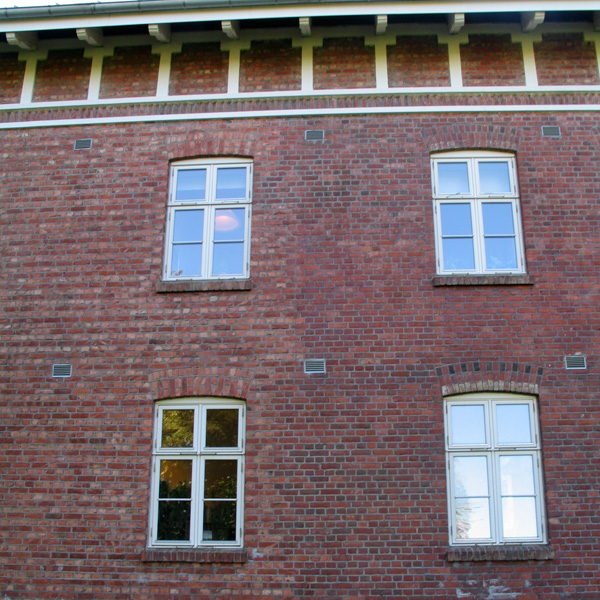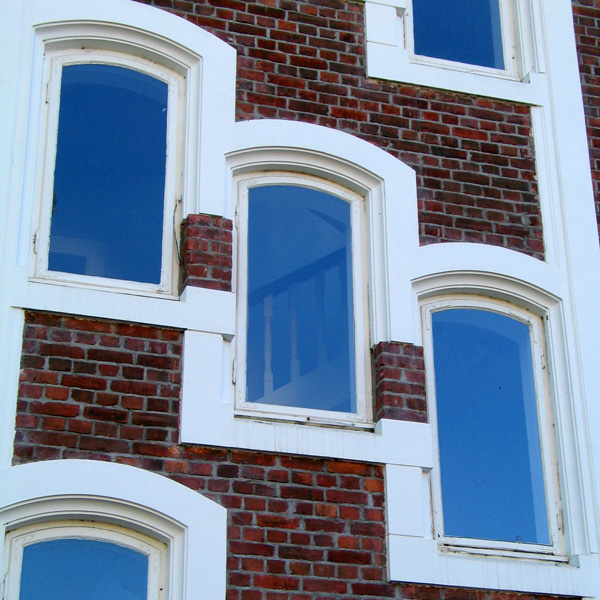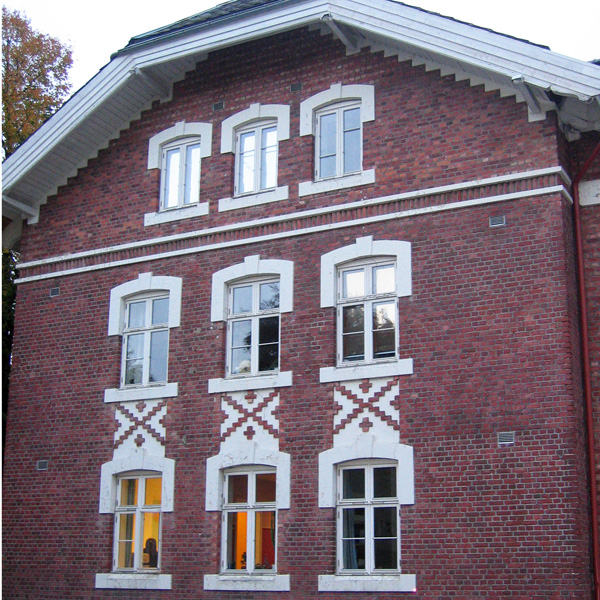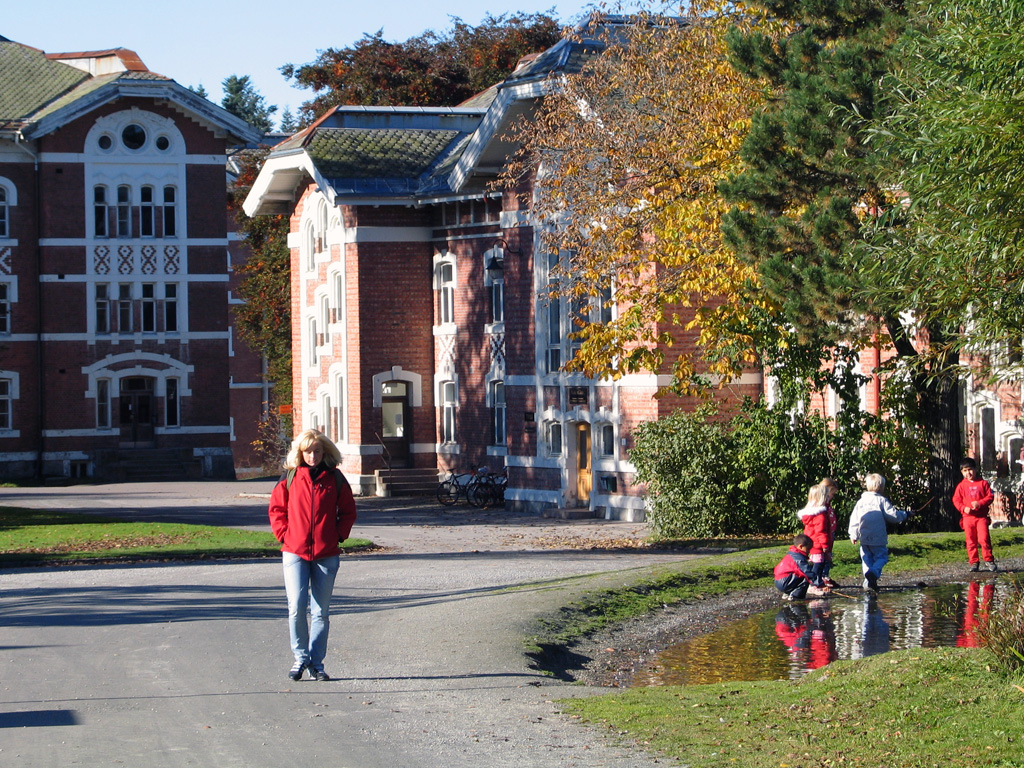Tivoli is one of the three school buildings that were constructed for the start of the school year in 1859. The buildings form a naturally symmetric courtyard around the tree that was planted on May 22, 1864.
Økonomibygningen (The Economy building) and Tivoli are situated directly across from each other and are of equal length. In 1859, they were approximately 26 meters long and 11 meters wide. The imaginative names emerged later; originally, the buildings were referred to as the northern and southern wings.
Tivoli was the first educational building; it housed classroom, drawing room, and a laboratory. Additionally, there were two family apartments with running water and sewage facilities on the second floor, as well as four student rooms on the top floor.

In the expansion of the school around the turn of the century, there was a need for larger spaces, and the three school buildings were approved for expansion. Architect Ole Sverre was assigned the task. Tivoli was completed in 1900. The year is marked in the facade decoration at the entrance. The building was extended towards the east, and significant changes were made to the facade and extensions towards the courtyard. Three projections/wings were added: the central wing serves as the entrance, while the two side wings contain stairs from the basement to the attic.

Tivoli was used as a student dormitory until 1990. Since 1992, it has functioned as an office building for Noragric.
Appearance
The original school building was a simple brick house with plain arches over the windows. Symmetry was emphasized, and two vertical gutters divided the building into three parts. The central section had rows of three windows, while the other two sections had rows of two windows. The entrances were located on either side of the central part. The building had three skylights and four chimneys. The bricks were sourced from a factory near Årungen, and Grorud granite was used in the foundation. After the renovation, the building underwent changes in style and size. The smooth brick facade facing the courtyard was replaced with an entrance that was brought forward and adorned with decorative elements. The roof tiles were replaced with Oppdal slate.
On the backside of Tivoli, one can clearly see the difference in the stone used in 1859 and 1900. In the foundation, there is also a significant difference in the mortar. The simple symmetrical windows, with a decorative arch in brickwork above them, have been continued in the new section.
Økonomibygningen, which externally is similar to Tivoli, has a ‘rear facade’ that is more ornate than the ‘rear facade’ of Tivoli. This is because the backside of the Economy Building faces the access road and is more visible. The Fredrikhald Royal Road (Fredrikshald kongevei) that passed by was closed as an access road before the renovation began.
Great emphasis has been placed on symmetry in windows and wings. In the stairwells, windows have been incorporated diagonally above each other, following the staircase’s incline on the inside. The entrances of all three courtyard buildings share common features. A narrow entrance door is framed by windows and white plaster. This is elevated and rounded in circular windows at the top.

The two short walls are not the same; there are three windows in width towards Urbygningen, while there are four towards Svanedammen.

The farm buildings are constructed with great attention to symmetry between the buildings, but the transition to Urbygningen is also important. Colors, patterns, and symmetry are reflected in all directions. The skylights were removed in 1900, but they have now been replaced with roof windows on half of the loft. Renovation work to utilize this space has begun but is not yet completed.

Information sourced from the book ”Bygninger ved Noreg sin Landbrukshøgskole teikna av Ole Sverre” written by av Erik Aas jr. in 1996.
